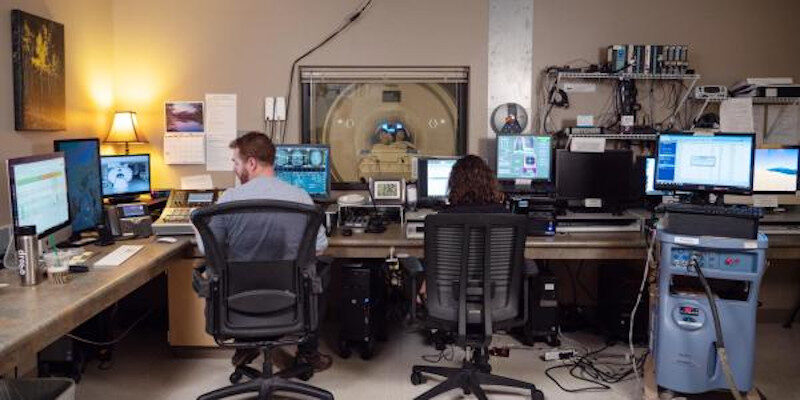
But new CU Boulder research, published today in the journal JAMA Psychiatry, provides some of the strongest evidence yet that a non-drug, psychological treatment can provide potent and durable relief.
The study found that two-thirds of chronic back pain patients who underwent a four-week psychological treatment called Pain Reprocessing Therapy (PRT) were pain-free or nearly pain-free post-treatment. And most maintained relief for one year. They also showed changes in pain-generating brain regions after therapy.
"For a long time we have thought that chronic pain is due primarily to problems in the body, and most treatments to date have targeted that," said lead author Yoni Ashar, who conducted the study while earning his PhD in the Department of Psychology and Neuroscience at CU Boulder. "This treatment is based on the premise that the brain can generate pain in the absence of injury or after an injury has healed, and that people can unlearn that pain. Our study shows it works."
Misfiring neural pathways
Approximately 85% of people with chronic back pain have what is known as "primary pain," meaning tests are unable to identify a clear bodily source, such as tissue damage, osteoarthritis or disc degeneration.
Mounting research suggests that misfiring neural pathways are at least partially to blame: Different brain regions--including those associated with reward and fear--activate during episodes of chronic pain than acute pain. And among chronic pain patients, certain neural networks are sensitized to overreact to even mild stimuli.
If pain is a warning signal that something is wrong with the body, primary chronic pain, Ashar said, is "like a false alarm stuck in the 'on' position."
PRT seeks to silence the alarm.
"The idea is that by thinking about the pain as safe rather than threatening, patients can alter the brain networks reinforcing the pain, and neutralize it," said Ashar, now a postdoctoral researcher at Weill Cornell Medicine.
Ashar and senior author Tor Wager recruited 151 men and women who had back pain for at least six months at an intensity of at least four on a scale of zero to 10.
Those in the treatment group completed an assessment followed by eight one-hour sessions of PRT, a technique developed by Los Angeles-based pain psychologist Alan Gordon. The goal: To educate the patient about the role of the brain in generating chronic pain; to help them reappraise their pain as they engage in movements they'd been afraid to do; and to help them address emotions that may exacerbate their pain.
For instance, if someone always experiences pain when they sit down, they might be asked to sit down slowly, paying attention to how it really feels and trying to view the sensation as safe. If pain flares up around a mean boss or estranged relative, they might acknowledge that and pay attention to it.
Pain is not 'all in your head'
"This isn't suggesting that your pain is not real or that it's 'all in your head'," stressed Wager, a former professor in CU Boulder's Institute of Cognitive Science, now at Dartmouth College. "What it means is that if the causes are in the brain, the solutions may be there, too."
Before and after treatment, participants also underwent functional magnetic resonance imaging (fMRI) scans to measure how their brains reacted to a mild pain stimulus. In the end, for most patients, PRT was remarkably effective.
"The magnitude and durability of pain reductions we saw are very rarely observed in chronic pain treatment trials," Ashar said, noting that opioids--while highly addictive--have yielded only moderate and short-term relief in many trials.
After treatment, 66% of patients in the treatment group were pain-free or nearly pain-free compared to 20% of the placebo group and 10% of the no-treatment group. And when people in the PRT group were exposed to pain in the scanner post-treatment, brain regions associated with pain processing--including the anterior insula and anterior midcingulate--had quieted significantly.
The authors stress that the treatment is not intended for "secondary pain"--that rooted in acute injury or disease.
More and larger studies are needed to determine if the treatment is effective for treating other types of chronic pain.
Meanwhile, other similar brain-centered techniques are slowly being embraced by pain specialists, physical therapists and other clinicians.
"This study suggests a fundamentally new way to think about both the causes of chronic back pain for many people and the tools that are available to treat that pain," said co-author Sona Dimidjian, professor of psychology and neuroscience and director of the Renee Crown Wellness Institute at CU Boulder. " It provides a potentially powerful option for people who want to live free or nearly free of pain."



Reader Comments
R.C.
The way this article is written is sloppy too.
Distinction should be very clearly made between a physiological problem in the brain and doctors' go-to dx of convenience: 'conversion disorder' /'psychosomatic effects'.
But then HCPs would have to finally concede that their very convenient dx of 'all in the mind' is utterly wrong.
It's my betting that everything that was previously considered to be 'psychosomatic' will eventually be found to be due to 'brain switches' that are autonomously ON when they should be off.
Nothing to do with 'the mind' or 'neuroses' or 'mental ill health' at all.
We can thank the vile, self-promoting Freud for the invention of this 'conversion' concept that has been causing huge misery to millions and millions of patients misdiagnosed by ignorant and lazy doctors for a century now.